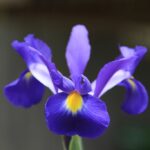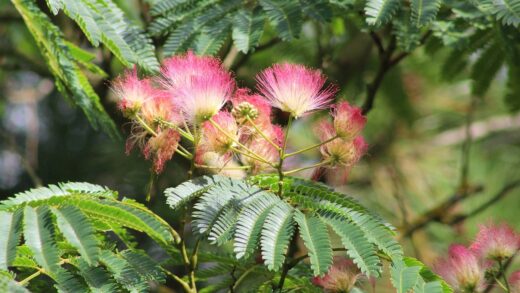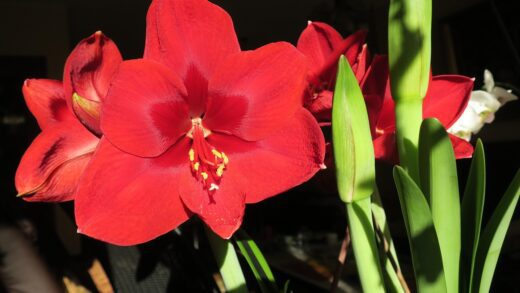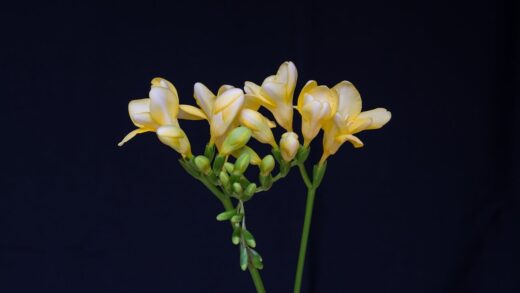While glory-of-the-snow are considered low-maintenance and are not heavy feeders, providing them with adequate nutrition is essential for achieving the most spectacular and enduring displays. Proper fertilization supports vigorous growth, enhances the vibrancy of the blooms, and, most critically, fuels the development and multiplication of the bulbs. A well-nourished bulb will not only produce a beautiful flower in the spring but will also have the energy reserves to form offsets, leading to the creation of dense, naturalized colonies over time. Understanding the specific nutrient needs of these bulbs, as well as the appropriate types of fertilizers and the correct timing for their application, is key to maximizing their performance and ensuring their long-term health in the garden landscape.
The nutritional needs of glory-of-the-snow are centered on replenishing the energy expended during their rapid spring growth and flowering cycle. Like all plants, they require a balance of macronutrients—nitrogen (N), phosphorus (P), and potassium (K)—along with various micronutrients. For bulbous plants, phosphorus is particularly vital for promoting strong root growth and bulb development, while potassium contributes to overall plant hardiness and disease resistance. Nitrogen is important for healthy foliage growth, which is the engine of photosynthesis that powers the entire process.
The ideal fertilization strategy is one that provides a slow, steady supply of these nutrients, making them available to the plant when it is actively growing. A heavy application of fast-acting fertilizer is not only unnecessary but can be detrimental, potentially burning the roots or promoting lush, weak foliage at the expense of flowers and bulb health. Instead, a more measured approach using either organic matter or specialized slow-release bulb fertilizers yields the best results.
Timing is a crucial element of any successful fertilization plan for glory-of-the-snow. Applying nutrients when the plant is dormant is ineffective, as the inactive roots cannot absorb them. The key is to provide nutrition just before or during the period of active growth. By aligning fertilizer application with the plant’s natural life cycle, the gardener can ensure that the nutrients are used efficiently to support the current season’s growth and to build a strong foundation for the years to come.
Essential nutrients for bulb health
The health and productivity of glory-of-the-snow bulbs are directly tied to the availability of three primary macronutrients: nitrogen, phosphorus, and potassium. Each plays a distinct and crucial role. Nitrogen (N) is a fundamental component of chlorophyll, the pigment that allows plants to photosynthesize. It is therefore essential for the development of the lush, green foliage that appears after flowering. Healthy leaves are vital, as they are responsible for creating the food that will be stored in the bulb for the next year.
Phosphorus (P) is arguably the most critical nutrient for all bulbous plants. It plays a central role in energy transfer within the plant and is indispensable for the development of a strong and extensive root system. Healthy roots are necessary for anchoring the plant and for the efficient uptake of water and other nutrients. Furthermore, phosphorus is directly involved in the formation of flowers and the development of the bulb itself, including the production of offsets. An adequate supply of phosphorus ensures the bulb has the resources to perennialize and multiply.
Potassium (K) is often referred to as the “quality” nutrient. It regulates many of the plant’s metabolic processes, including photosynthesis and the transport of sugars from the leaves to the bulb for storage. Potassium also helps to strengthen the plant’s cell walls, which improves its overall sturdiness, hardiness against cold, and resistance to pests and diseases. For glory-of-the-snow, a good supply of potassium ensures the plant is vigorous and resilient, able to withstand environmental stresses and perform reliably each spring.
In addition to these macronutrients, bulbs also require a range of micronutrients, such as calcium, magnesium, and iron, although in much smaller quantities. Fortunately, these are typically present in sufficient amounts in average garden soil, especially if it is regularly amended with organic matter. A fertilization program that focuses on providing a balanced supply of N, P, and K while maintaining good overall soil health with compost will meet all the nutritional needs of glory-of-the-snow.
Choosing the right type of fertilizer
When selecting a fertilizer for glory-of-the-snow, gardeners have several excellent options, ranging from synthetic granular formulas to natural organic amendments. One of the most common and effective choices is a granular, slow-release fertilizer specifically formulated for bulbs. These products are designed to release their nutrients gradually over time, which aligns perfectly with the needs of the plant. Look for a formula with a balanced N-P-K ratio, such as 10-10-10, or one that is slightly higher in phosphorus, like a 5-10-10 or 5-10-5 ratio.
Organic amendments are another superb choice and have the added benefit of improving the soil structure and feeding the beneficial microorganisms that contribute to soil health. Bone meal is a classic organic fertilizer for bulbs, providing an excellent slow-release source of phosphorus and calcium. It can be mixed into the soil at the bottom of the planting hole when the bulbs are first planted. Well-rotted compost and leaf mold are also invaluable; incorporating them into the soil provides a wide range of nutrients and improves both drainage and moisture retention.
Liquid fertilizers are generally not the best choice for in-ground plantings of glory-of-the-snow. While they provide nutrients quickly, their effects are short-lived, and they can easily leach through the soil before the plant has a chance to absorb them fully. They are more suitable for container-grown bulbs where the nutrient supply is more controlled. For garden plantings, the slow and steady approach of granular fertilizers or organic matter is far superior for long-term health.
Regardless of the type of fertilizer chosen, it is crucial to follow the application rates specified on the product packaging. Over-fertilizing can be more harmful than not fertilizing at all. An excess of nitrogen, in particular, can stimulate weak, floppy foliage growth at the expense of flowers and can make the bulbs more susceptible to disease. A light and strategic application is all that is needed to support the healthy growth of these resilient plants.
Timing of fertilizer application
The timing of fertilizer application is as important as the choice of fertilizer itself. Nutrients should be made available to the plant when its roots are actively growing and able to absorb them. For glory-of-the-snow, there are two primary windows for effective fertilization: at the time of planting in the autumn and in the very early spring as new growth emerges. Applying fertilizer during the summer dormancy period is ineffective and wasteful.
When planting new bulbs in the autumn, it is the perfect opportunity to incorporate fertilizer directly into the planting area. A slow-release granular bulb food or an organic amendment like bone meal can be mixed into the soil at the bottom of the planting hole. This ensures that the nutrients are positioned right where the new roots will grow, providing a sustained source of food to help the bulb establish itself before winter and to fuel its initial growth in the spring.
For established clumps of glory-of-the-snow, the best time to apply fertilizer is in the early spring, just as the first green shoots are beginning to poke through the soil. A light broadcast of a granular bulb fertilizer over the surface of the soil where the bulbs are planted is sufficient. The spring rains will help to dissolve the granules and carry the nutrients down to the root zone. This early spring feeding provides a boost of energy to support the current season’s flowering and foliage growth.
An alternative timing for feeding established clumps is in the autumn. A top-dressing of well-rotted compost applied as a mulch over the planting area in late autumn serves a dual purpose. It provides a slow release of nutrients that will become available to the plants in the spring, and it also adds a layer of insulation to protect the bulbs over the winter. This method closely mimics the natural nutrient cycling that occurs in a woodland environment.
Organic versus synthetic fertilization options
Gardeners can choose between organic and synthetic fertilizers to meet the nutritional needs of their glory-of-the-snow, and both approaches can be effective. Synthetic fertilizers are manufactured chemical products that offer nutrients in a concentrated, readily available form. They are convenient, their nutrient content is precise and guaranteed, and they can provide a quick boost to plants. A balanced, slow-release synthetic bulb food is a reliable and straightforward option for ensuring the bulbs receive the necessary N-P-K ratio.
However, synthetic fertilizers do little to improve the long-term health of the soil. They feed the plant directly but do not support the soil ecosystem of beneficial microbes, fungi, and earthworms. Over-reliance on synthetic fertilizers can, over time, lead to a decline in soil structure and fertility. It is also easier to over-apply synthetic products, which can lead to root burn or nutrient runoff that can be harmful to the wider environment.
Organic fertilizers, on the other hand, are derived from natural materials such as compost, manure, bone meal, and leaf mold. These materials release their nutrients more slowly as they are broken down by soil organisms. This process not only feeds the plant but also feeds the soil itself, improving its structure, aeration, and water-holding capacity over time. Building healthy soil is the cornerstone of sustainable gardening and leads to healthier, more resilient plants that are less dependent on external inputs.
For glory-of-the-snow, an integrated approach often works best. Using organic matter like compost as a soil foundation provides a broad spectrum of nutrients and improves the physical properties of the soil. This can be supplemented with a targeted application of a specific fertilizer, whether organic like bone meal for phosphorus or a balanced synthetic bulb food in the spring, if a soil test or plant performance indicates a need. This balanced approach supports both the immediate needs of the plant and the long-term vitality of the garden soil.
Recognizing signs of nutrient deficiency or excess
While glory-of-the-snow are generally trouble-free, their appearance can sometimes provide clues about their nutritional status. A nutrient deficiency, although uncommon in average garden soils, may manifest in several ways. One of the most common signs of a general lack of nutrients is a gradual decline in vigor. If a once-thriving clump produces fewer flowers each year, and the plants appear smaller and weaker, it may be an indication that the soil has become depleted and would benefit from fertilization.
Specific symptoms can sometimes point to a particular nutrient deficiency. For example, if the foliage appears pale green or yellowish (a condition known as chlorosis), it may signal a lack of nitrogen. Since nitrogen is mobile within the plant, these symptoms often appear on the older, lower leaves first. A deficiency in phosphorus might not have obvious visual cues but can result in poor root development and a significant reduction in flowering, which is often the primary concern for the gardener.
Conversely, an excess of nutrients, particularly nitrogen, can also cause problems. The most common sign of too much nitrogen is overly lush, dark green foliage that is often weak and floppy. This excessive vegetative growth comes at the expense of flower production; the plant may produce a great deal of leaves but few or no blooms. An overabundance of fertilizer can also lead to the accumulation of salts in the soil, which can damage the bulbs’ roots.
In most cases, visual diagnosis should be combined with an assessment of the overall growing conditions. Poor flowering can also be caused by insufficient sunlight, overcrowding, or cutting the foliage back too early. However, if these factors have been ruled out, a nutritional issue may be the culprit. The best course of action is to adopt a regular, light feeding schedule using a balanced bulb fertilizer or organic compost, which will prevent most deficiencies from occurring and avoid the risks associated with over-fertilization.




















